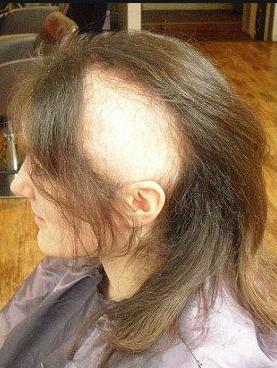
Welcome back! Last week we talked about Sensory Specific Satiety. If you missed that blog and would like to catch up, click HERE.
This week we are going to tackle a disorder called Trichotillomania. Wow, that’s a mouthful, right? Here’s how you pronounce this word:
Now, let’s find a working definition of this disorder:
Trichotillomania (pronounced trik-o-till-o-MAY-nee-uh), also referred to as “hair-pulling disorder,” is a mental disorder classified under Obsessive-Compulsive and Related Disorders and involves recurrent, irresistible urges to pull hair from the scalp, eyebrows, eyelids, and other areas of the body, despite repeated attempts to stop or decrease hair pulling.
I once knew a girl who had no eyelashes. She would literally pull them out as they came in. She otherwise appeared to have everything under control in her life. She was popular at school, danced, sang, acted in school plays, and seemed as if she owned the senior class…but her eyelashes told a different story.
Psycom has this to say about this particular disorder:
The primary feature of trichotillomania is recurrent pulling of one’s own hair. Hair pulling can occur in any region of the body in which hair grows; the most common sites include the scalp, eyebrows, and eyelids. Less common areas include facial, pubic, and peri-rectal regions.
Other symptoms can include the following:
- Repeated attempts to decrease or stop hair pulling
- Hair pulling causes distress or impairment in social, occupational, or other areas of functioning
- An increasing feeling of tension before the hair pulling, or when trying to resist pulling
- A feeling of relief after pulling
- Noticeable hair loss
- Playing with pulled hair, or rubbing it across the face or skin
- Biting, chewing, or eating pulled hair
- Pulling certain kinds of hair (certain textures)
- Hair pulling often occurs in private
This behavior normally starts around the onset of puberty and will be a life long, chronic disorder. The good news is that it can see long periods of remission, and there are many, many treatments available.

Habit reversal is often the primary treatment of trichotillomania. Individuals learn how to recognize situations where they are likely to pull hair and substitute other behaviors instead. Many people use journaling, alerts, and other strategies to increase awareness of triggers. Instead of pulling hair, a person might substitute behaviors such as; clenching fists or snapping an elastic band on the wrist.
Becoming aware of your triggers also helps. If you know ahead of time that performing on stage is going to cause you stress, and ultimately lead to you engaging in hair pulling, then you can plan ahead for when that urge hits and attempt to substitute something equally as satisfying.
Other recommended treatments are:
- Cognitive therapy: This type of therapy can help people explore distorted beliefs related to hair pulling.
- Self-awareness training: Individuals learn to become more aware of their hair pulling patterns by tracking when they pull and detailing emotions and other important information.
- Relaxation training: This helps people learn to focus on and calm their central nervous systems in response to stress triggers.
- Deep breathing training: Learning the proper way to engage in deep breathing helps increase relaxation and focus.
- Process-oriented therapy: Talk therapy can be effective in helping people explore their triggers and emotions beneath the pulling.
- Medication: While there are no medications specific to the treatment of trichotillomania, SSRIs and SNRIs can be used to treat some of the accompanying symptoms of anxiety.
- Family therapy: For children and adolescents, family therapy helps parents learn to better respond to and manage symptoms.
- Group therapy: Trichotillomania can feel isolating. Groups help people connect with others enduring a similar struggle and provide support for one another.
This is a short video on the subject matter. This woman chose to shave her head to control her urge to hair pull. It’s well worth the watch and runs 2 minutes.
Thanks for reading us…we appreciate you! Until next week, be kind to yourself and each other.

1 Comment